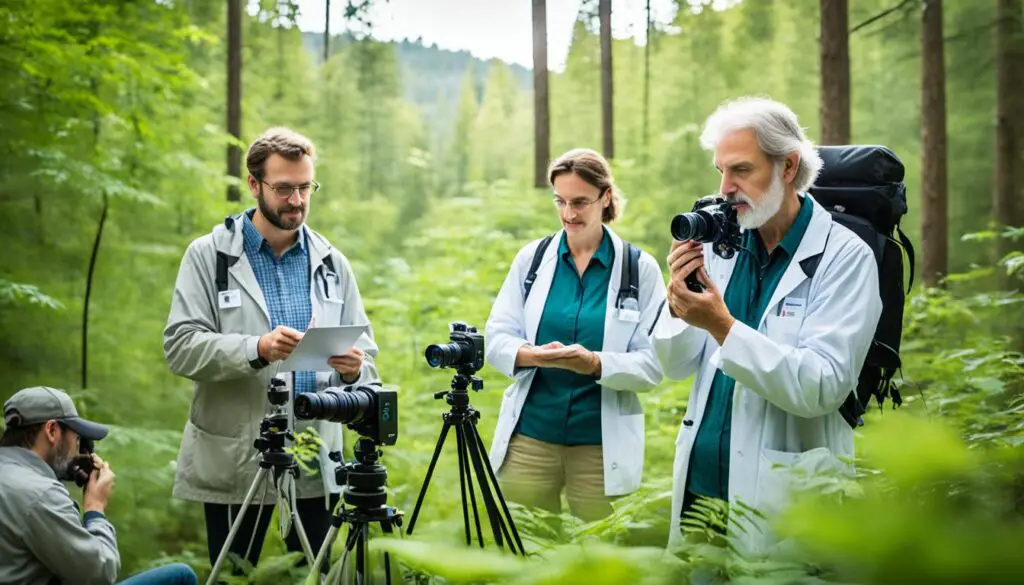The idea of animals being able to communicate with humans has fascinated people for centuries. From the fictional character Dr. Dolittle to real-life experiments with talking pets, there is a curiosity about the possibility of interspecies dialogue. While there have been studies on animal communication and attempts to teach animals human language, the question of what would happen if animals could truly communicate with humans remains open.
Key Takeaways:
- Animal communication research explores the possibilities of animals communicating with humans.
- Studies have shown that animals can convey basic messages and understand certain aspects of human language.
- The implications of animal communication could revolutionize fields like animal training, veterinary care, and conservation efforts.
- While animals may not possess language, they communicate through body language and instinctive calls.
- Understanding animal communication provides insights into their behaviors and emotions.
The History of Animal Communication Research

In the 20th century, researchers delved into the fascinating world of animal communication, conducting extensive studies to understand the complexities of non-human language. They explored various avenues, including animal psychology studies and animal language studies, aiming to decipher the intricate ways in which animals communicate with each other and, potentially, with humans.
One notable area of research involved attempts to teach chimpanzees sign language. Pioneering scientists like Francine Patterson conducted groundbreaking experiments with the renowned chimpanzee named Koko. Through these studies, it became evident that animals possess the ability to convey basic messages using sign language symbols.
Additionally, scientists focused on studying the vocalizations and gestures of animals such as dolphins and monkeys to gain insights into their communication systems. By analyzing their sounds, body language, and social behaviors, researchers were able to decipher some of the messages animals transmit to one another.
These animal psychology studies and animal language studies have revealed that animals possess the capacity to understand certain aspects of human language. They can comprehend words, commands, and even associate specific vocalizations with corresponding actions or objects. This understanding of human language highlights the cognitive abilities of animals and implies a level of mental processing previously unrecognized.
However, despite these significant discoveries, it seems that the complexity of human language, encompassing elements like grammar and syntax, remains unique to humans. While animals demonstrate remarkable communication skills, the intricacies of human linguistic systems have not yet been replicated or fully understood in the animal kingdom.
Understanding animal behavior and communication patterns is crucial for comprehending the world of animals and fostering a connection between humans and other species. Let’s explore the captivating realm of animal communication further.
Examples of Animal Language Studies
To provide a more tangible understanding of animal language studies, here are some noteworthy examples:
| Study | Subject | Key Findings |
|---|---|---|
| Washoe Project | Chimpanzee | Successfully learned signs for over 350 words and combined them to form unique messages. |
| Primate Vocalizations | Monkeys | Discovered distinct vocalizations that corresponded to different social contexts, such as warnings or mating rituals. |
| Bottlenose Dolphin Communication | Dolphins | Uncovered a complex system of clicks, whistles, and body movements used for social interactions and echolocation. |
Image: Example of ongoing research and animal psychology studies into animal communication.
The Implications of Animal Communication

The implications of animals being able to communicate with humans are vast. It would open up a whole new level of understanding and connection between humans and animals. It could potentially revolutionize fields such as animal training, veterinary care, and conservation efforts. The idea of animal telepathy, where animals can communicate with humans through mental telepathy, adds another layer to the discussion. However, there are also questions about the limitations of human understanding and whether true communication can ever be achieved.
Imagine a world where talking animals exist, where we can have meaningful conversations with our beloved pets or communicate with wild animals to understand their needs and perspectives. Animal telepathy, the ability for animals to communicate with humans through mental telepathy, could bridge the gap between species, enabling a deeper level of connection and exchange of information.
This breakthrough in interspecies communication would have profound implications in various fields. In animal training, trainers and pet owners could directly understand the needs and desires of their animals, leading to more effective training techniques and enhanced relationships. Veterinary care would also be revolutionized, as animals could finally verbalize their symptoms and discomfort, enabling veterinarians to provide more precise diagnoses and personalized treatment plans.
Conservation efforts would greatly benefit from animal communication as well. By understanding the perspectives and needs of endangered species, conservationists could develop more targeted approaches to protect their habitats and ensure their survival. Furthermore, researchers studying animal behavior and ecology would gain invaluable insights into the intricate interconnectedness of ecosystems through conversations with animals.
However, the concept of animal telepathy raises important questions. Can humans truly grasp the complexity of animal thoughts and emotions? Are our minds capable of understanding the unique perspectives of different species? While animals may be able to communicate with us, there may still be limitations to our human comprehension. The field of animal telepathy requires further research and exploration to unlock its full potential and address these challenges.
The Role of Body Language and Instinctive Calls in Animal Communication
While animals may not possess language in the same way humans do, they still communicate through body language and instinctive calls. This form of communication allows them to convey basic emotions and intentions.
For example:
- Birds singing: Many birds use their songs to attract mates or signal danger. Each bird species has its own unique song, which serves as a form of communication among individuals.
- Dogs wagging their tails: When a dog wags its tail, it often indicates happiness or excitement. However, the speed and position of the tail wag can also convey other emotions, such as fear or submission.
- Cats purring: Cats purr to communicate contentment and relaxation. It is often associated with feelings of comfort and security.
Understanding and interpreting these non-verbal cues is crucial in building relationships and comprehending the needs and emotions of animals. Body language and instinctive calls provide valuable insights into animal behavior and help humans navigate their interactions with different species.
| Examples of Body Language | Examples of Instinctive Calls |
|---|---|
| Birds flapping their wings vigorously to display dominance | Chimpanzees using high-pitched screams to alert others of danger |
| Dogs lowering their bodies and tucking their tails to show submission | Whales producing loud songs to communicate over long distances |
| Cats arching their backs and hissing to express aggression or fear | Wolves howling to communicate their location to other pack members |
Conclusion
The question of what would happen if animals could communicate with humans is a topic of great fascination and speculation. While significant progress has been made in animal communication research, the full extent of interspecies dialogue remains unknown. However, studying and understanding animal communication has the potential to offer valuable insights into their behaviors, emotions, and the diverse ways in which they express themselves.
By delving deeper into animal communication, we can develop a greater appreciation for the rich tapestry of non-verbal cues, body language, and instinctive calls that animals use to convey their intentions and emotions. This understanding can help nurture stronger relationships with our animal counterparts and aid in caring for their needs in veterinary and conservation settings.
Although the possibility of talking animals and animal telepathy may capture our imagination, the true nature and limitations of interspecies dialogue lie beyond our current comprehension. Nonetheless, continued research and exploration of animal communication hold immense potential for enhancing our connection with the animal kingdom and broadening our understanding of the natural world.
